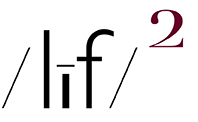ASIDE Left the Adirondack Park yesterday in order to purchase cigars and a new keyboard case for my new iPad. Made some photos along the way. END ASIDE
A FEW DAYS AGO MIKE JOHNSTON-ON TOP-POSTED an entry that was yet another the-sky-is-falling lament-re: the medium of photography and its apparatus-typical of many which appear on a regular basis on the interweb. Johnston’s doomsday opinion is based on 3 primary ideas:
the fact that he can no longer “trust” a photograph to be “true” cuz it’s so dang easy to make a fake, AKA; a highly manipulated photograph.
the end of camera making is coming cuz everyone will be using a phone as a picture making device.
he states that (a)“…over many decades, people who loved photography built up a culture of shared values and goals…(b)there were movements and major figures and trends and innovation and competing ideas…” all of which are now, if not gone, much diminished.
re: item 1; the only time a photograph might be considered to be “true” is when it is being presented as such in a news piece or in story telling that is meant to reflect the real world. iMo, if a fake is used in such cases, it is the fault of the presenter not the medium of photography. Also worth a mention is the fact that I am a card-caring member of the straight photography school and I am absolutely certain that I am not alone. I would even venture that there are more straight-shooters out there than ever before…but that written, who’s counting?
re: item 2; while I do not believe that there will never be a market for a dedicated-use picture making device, i.e. a camera, anything is possible in the marketplace. However, who the hell cares what device is employed to make a good photograph?
re: item 3(a); the idea that there was a time when the medium and its practitioners were untied with shared values and goals is a delusional fantasy. There were always, and still are, if not “warring” factions, vehemently held values and goals of many differing picture making practices. Diversity, (true personal vision) not unification, has always been the name of the game.
re: item 3(b); the loss or diminishment of movements, major figures, trends, innovation, and competing ideas. ASIDE wait, what? what happened to unified values and goals? END ASIDE To quote Johnston:
“what is the new generation of serious photographers, the ones who have come along in the last ten years? What are their shared concerns? How do they influence each other? Get serious. You can't call out any of that. It doesn't exist.”
iMo, I call that un-informed, nostalgia-driven, old-man drivel. The last time there was an emergence of new major figures, new trends, and innovation was in the 70s with the advent of / introduction of color photography in fine art picture making. A practice which was most often paired with the new topography picture making practice. Re: major figures…one could argue there were only 3 truly major figures-Shore, Meyerowitz, Eggleston-who emerged from that very significant movement.
That written, and call it what you will-momentum / inertia / laziness (?)-there has been no significant new picture making trend or innovation since that time. Or, just maybe, the medium has matured to a point where there is no new place to go.
That written ,it would seem that most of those making fine art photography work are doing so within the structure of the color/new topography framework. Many of whom are making damn good, if not paradigm shattering, photographs. And guess what? Most of those photographs are straight photographs, AKA: un-manipulated, “true” to how the real world appears, photographs and, despite Johnston’s doomsday doubts, that work is appearing in photobooks and portfolios.
Johnston’s lament ends with this anecdote:
” I know a photography curator at a major museum who once said to me, in private, "I miss photography." Weird, but I can relate.”
To which I would respond, and to paraphrase a well know saying, perhaps Johnston is looking for art in all the wrong places.

